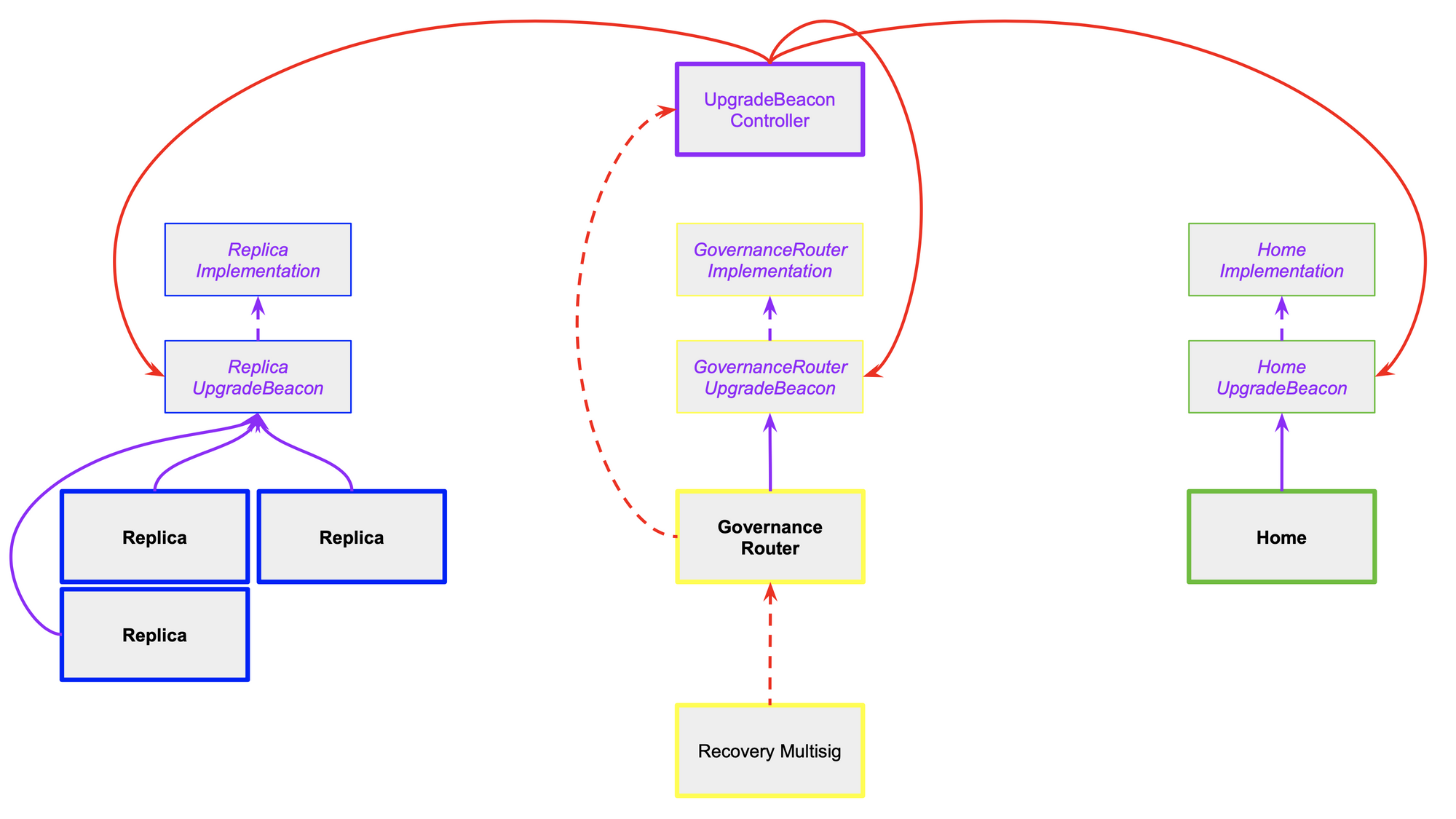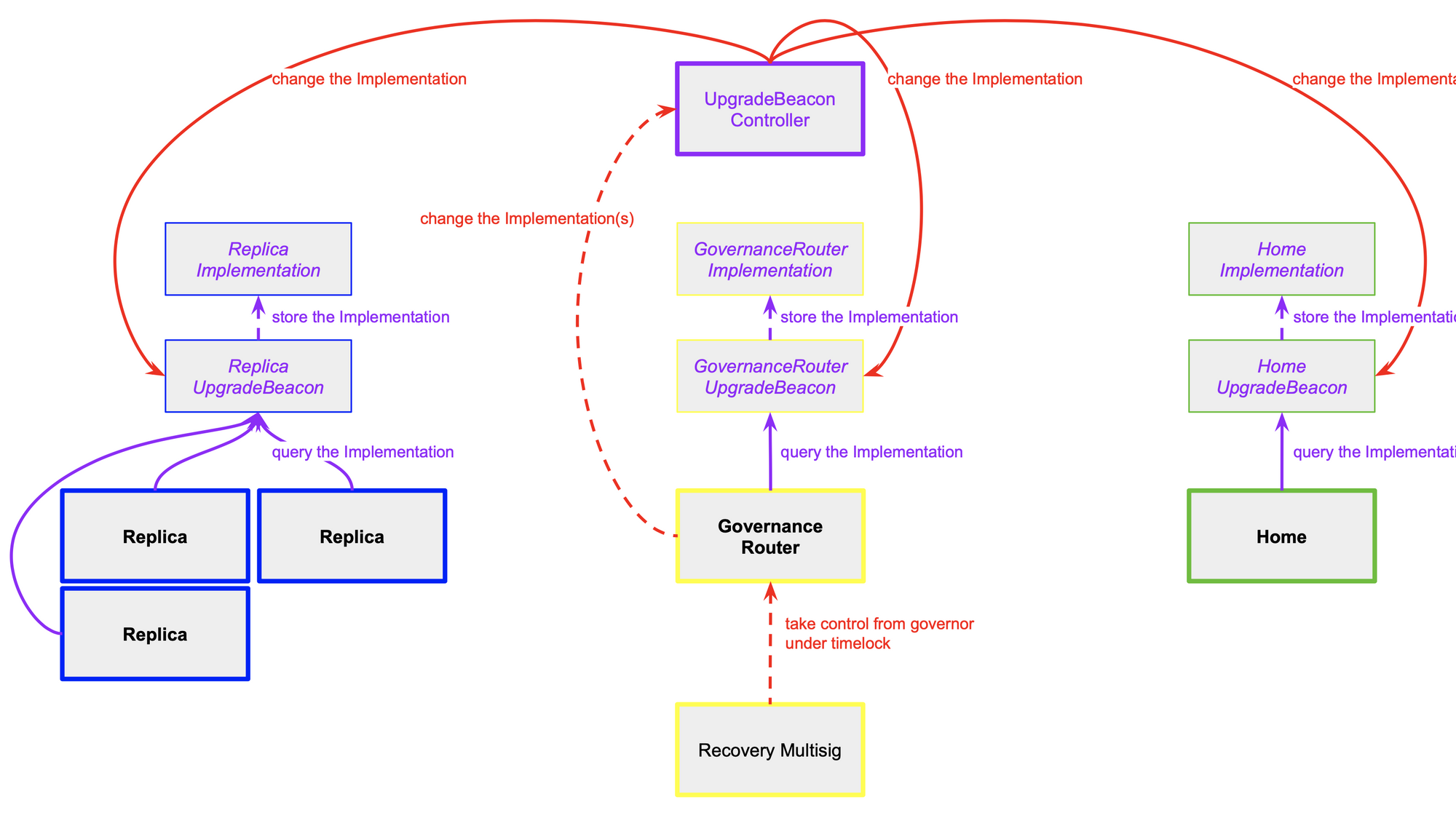Upgrade Setup
We will use the UpgradeBeacon pattern to implement three upgradable contract types: Home, Replica, and GovernanceRouter.
Each upgradable contract will have:
- Proxy
- the permanent address of the contract that external entities interact with
- holds the storage of the contract
- uses the logic specified by
Implementation - uses
delegatecallto forward contract calls fromProxy→UpgradeBeacon→Implementation
- UpgradeBeacon
- stores the (mutable) address of the
Implementation - forwards
delegatecallsto theImplementation - accepts new
Implementationaddresses from itsController(thereby performing upgrades for allProxies)
- stores the (mutable) address of the
- Implementation
- specifies the logic of the contract
- code is the same as a normal, non-upgradable contract implementation (though it should use upgrade-safe storage)
Each of the three UpgradeBeacon contracts will share a the same Controller — the contract with the power to perform upgrades.
The Controller contract will have two roles: controller and saver.
controller- is a transferrable role that should be performing upgrades in almost every case.
- will be set to the
GovernanceRouter Proxy, so that the Governance xApp ultimately controls the upgrades of the entire system. Note that this creates a circular dependency which makes upgrades of theGovernanceRouter Implementationparticularly sensitive.
saver- is a transferrable(?) role that is responsible for recovering the system in a catastrophic failure case. Actions performed by the
saverwill be subject to a timelock enforced by the Controller contract. - will be set to a multisig contract where the signatories are a set of known / trusted community members. the signatories for the
savermultisig be the same on every chain
- is a transferrable(?) role that is responsible for recovering the system in a catastrophic failure case. Actions performed by the
Diagrams

